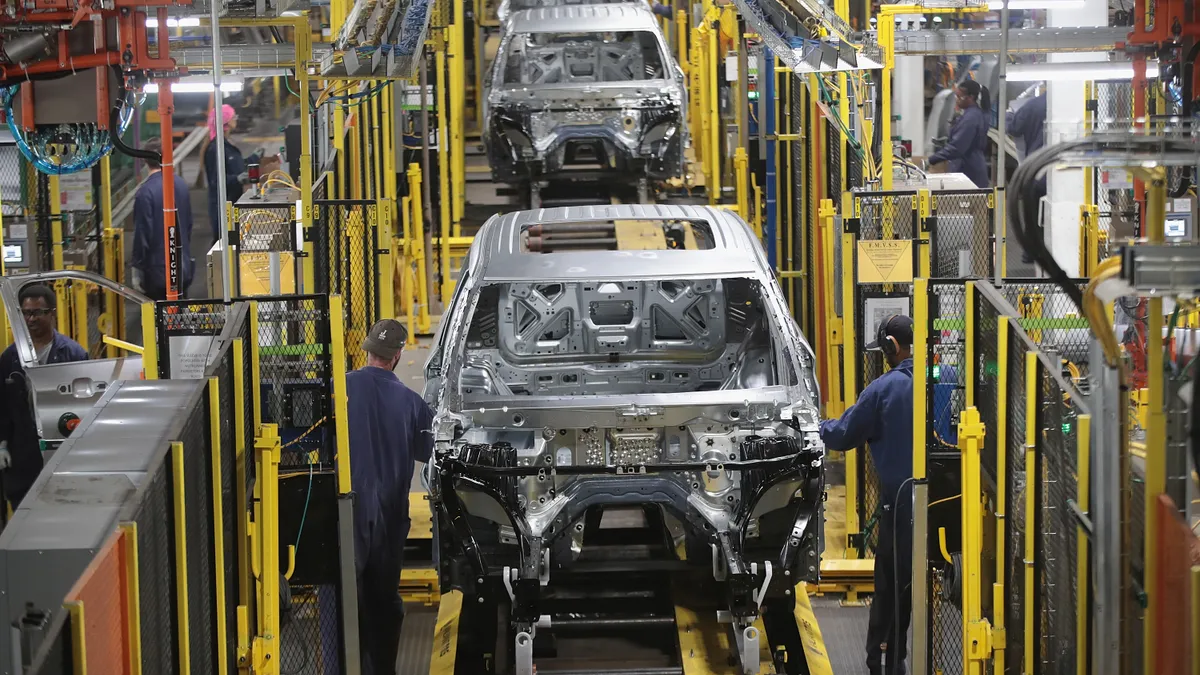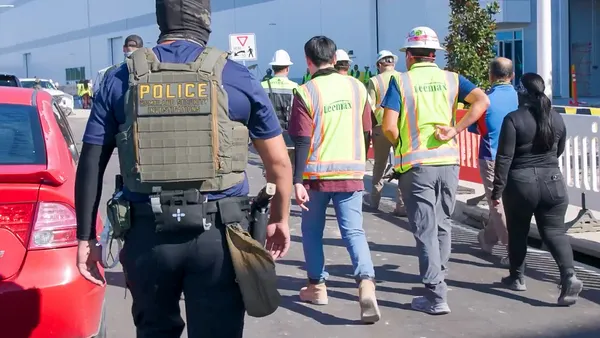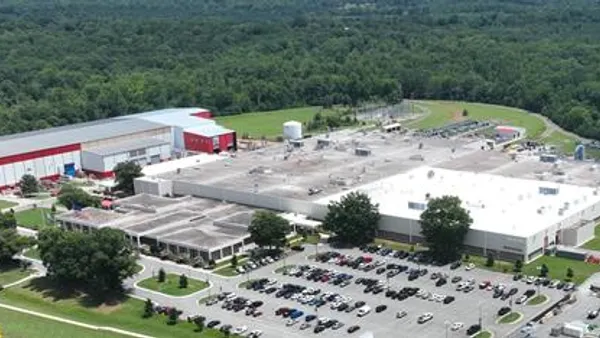Ongoing disruptions from the United Auto Workers continue to pose risks for automotive supply chain managers.
The United Auto Workers expanded its strike on Sept. 29 to include workers from Ford’s Chicago Assembly Plant and General Motor’s Lansing Delta Township Assembly factory after failing to make progress on negotiations.
Local union chapters had already walked off the job at three plants in mid-September after failing to reach agreements with the Big Three automakers.
To better understand how the UAW’s strike strategy will impact production for auto suppliers, we asked three experts for their take on how work stoppage expansions will further disrupt the automotive supply chain.
Editor's note: Expert answers have been edited for length and clarity

Ann Marie Uetz
Bankruptcy partner and vice-chair of Foley's National Litigation Department
The UAW has been surgical in its approach and has held its powder by not striking the big profit lines — engines and trucks. Once that happens, the impact across the global supply chain will be swift and severe, because those are the lines that drive the most profits for the Detroit 3 and have the greatest reach across the supply base.
My supplier clients have already received notices this morning from the Detroit 3 directing them to continue to build parts but in many cases to not ship — forcing suppliers to stockpile and warehouse parts, and to incur the cost to do so.
As the strike lingers, eventually demand for parts and materials will decrease as the Detroit 3 will likely cancel firm orders for parts and forecasts for future orders in the coming weeks and even months. Cash flow to automotive suppliers who sell to the affected plants will be delayed as orders are cancelled. An automotive supplier whose orders to the three assembly plants are canceled will in turn have less cash flow to support their operations to produce parts for their other customers. It's like throwing a stone across the water — the immediate impact is felt by the three assembly plants that are being struck, but there will be ripple effects across the global supply chain as suppliers grapple with cancelled orders and an uncertain restart date. Tier 1 suppliers with strong balance sheets will be fine. But further down the line of Tier 2 and 3 suppliers, weaker and smaller companies will be hit hard and we expect to see increased bankruptcy filings and further consolidation of the supply base.
Suppliers will also need to be prepared to flip the switch to full production and likely overtime to accomplish that very quickly, which may force some suppliers to allocate scarce materials and resources to meet the incredible demand the Detroit 3 will force when the strike ends.

Mike Wall
Executive director of automotive analysis at S&P Global Mobility
Unlike [the Sept. 15] action impacting parts distribution centers, this one directly impacts vehicle production. While the very important full-size pickup and SUV assembly plants remain unaffected by [the] strike activity, the affected facilities are still fairly important to both automakers and their downstream suppliers. We remain concerned about how these and future actions will increasingly impact suppliers (particularly Tier 2 and 3 suppliers). We are continuing to monitor the situation and are certainly hopeful there will be a resolution sooner rather than later.

Doug Mehl
Partner and Americas lead, automotive & industrials at Kearney
The [previously] announced locations at GM Lansing and Ford Chicago will impact those UAW employees directly and the specific suppliers. The OEMs typically require their suppliers to carry roughly 2 weeks of inventory, which typically consumes quite a bit of warehouse space given the high volumes in automotive. That doesn’t leave much room for suppliers to continue building parts, which means suppliers will be impacted very quickly. For each UAW worker on strike, they take out multiple workers at suppliers.
Supply chain managers need to be ready to shut down on a moment’s notice. Suppliers need to understand how many employees are required for each OEM product line — both direct labor and indirect — and have a plan to furlough or divert workers as necessary.
The impact on automotive suppliers will be severe. Most suppliers have razor thin margins and rely on volume to be profitable. When the volume is impacted the suppliers can lose a lot of money very quickly. The impact at each supplier will depend on their mix of business as they will have some parts impacted and others which are still running. For those suppliers impacted the most, I would expect some not to have deep enough pockets to weather the storm and will get into some financial struggles. We will see cash flow issues and debt covenants violated with lenders, requiring a renegotiation of terms or even bankruptcies and changes of ownership. From an economic standpoint, the workers out of work will go far beyond the UAW workers out on strike and have a significant impact on the local economies where those workers live.
I’ve never seen the dynamics of the negotiations as tumultuous as they are currently. Typically, there is positive talk on the surface and the hard discussions are behind closed doors in the negotiating room. This time there is negative talk publicly from both sides. This one is far from over.













